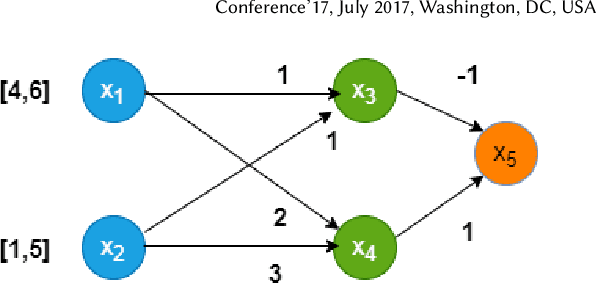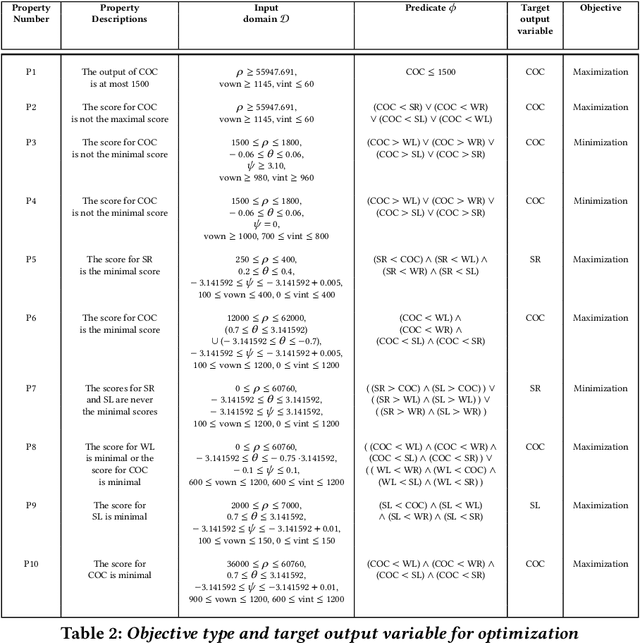Ansuman Banerjee
Fast Falsification of Neural Networks using Property Directed Testing
Apr 26, 2021



Abstract:Neural networks are now extensively used in perception, prediction and control of autonomous systems. Their deployment in safety-critical systems brings forth the need for verification techniques for such networks. As an alternative to exhaustive and costly verification algorithms, lightweight falsification algorithms have been heavily used to search for an input to the system that produces an unsafe output, i.e., a counterexample to the safety of the system. In this work, we propose a falsification algorithm for neural networks that directs the search for a counterexample, guided by a safety property specification. Our algorithm uses a derivative-free sampling-based optimization method. We evaluate our algorithm on 45 trained neural network benchmarks of the ACAS Xu system against 10 safety properties. We show that our falsification procedure detects all the unsafe instances that other verification tools also report as unsafe. Moreover, in terms of performance, our falsification procedure identifies most of the unsafe instances faster, in comparison to the state-of-the-art verification tools for feed-forward neural networks such as NNENUM and Neurify and in many instances, by orders of magnitude.
A Methodology for Search Space Reduction in QoS Aware Semantic Web Service Composition
Sep 19, 2018



Abstract:The semantic information regulates the expressiveness of a web service. State-of-the-art approaches in web services research have used the semantics of a web service for different purposes, mainly for service discovery, composition, execution etc. In this paper, our main focus is on semantic driven Quality of Service (QoS) aware service composition. Most of the contemporary approaches on service composition have used the semantic information to combine the services appropriately to generate the composition solution. However, in this paper, our intention is to use the semantic information to expedite the service composition algorithm. Here, we present a service composition framework that uses semantic information of a web service to generate different clusters, where the services are semantically related within a cluster. Our final aim is to construct a composition solution using these clusters that can efficiently scale to large service spaces, while ensuring solution quality. Experimental results show the efficiency of our proposed method.
QoS aware Automatic Web Service Composition with Multiple objectives
Sep 07, 2018



Abstract:With an increasing number of web services, providing an end-to-end Quality of Service (QoS) guarantee in responding to user queries is becoming an important concern. Multiple QoS parameters (e.g., response time, latency, throughput, reliability, availability, success rate) are associated with a service, thereby, service composition with a large number of candidate services is a challenging multi-objective optimization problem. In this paper, we study the multi-constrained multi-objective QoS aware web service composition problem and propose three different approaches to solve the same, one optimal, based on Pareto front construction and two other based on heuristically traversing the solution space. We compare the performance of the heuristics against the optimal, and show the effectiveness of our proposals over other classical approaches for the same problem setting, with experiments on WSC-2009 and ICEBE-2005 datasets.
 Add to Chrome
Add to Chrome Add to Firefox
Add to Firefox Add to Edge
Add to Edge